If you’re a good pet parent, then you don’t let anything go by unnoticed when it comes to your dog. Not even that awkward red bump on the dog’s paw.
What is that? It wasn’t there yesterday, was it?
Red bumps are pretty common, and they can occur anywhere on a dog’s body, even on their paws.
They’re little red flags that something is going on with your dog. But, if these little red flags are accompanied by other symptoms like lameness on that leg or obvious pain, they turn into big red flags.
Today, I’m here to discuss with you what those red bumps can mean and how to treat them. Fortunately, not all of them are bad or mean a severe condition for you. These bumps can be pretty harmless and gone just after one or two treatment options.
Red bumps usually affect young dogs, but they can be present with older canines, too. There’s no age restriction here.
If you agree, we shall continue through the rest of the article to find out the most common causes behind those boring red bumps on a dog’s paws.
What Can Red Bump On Dog Paw Mean?
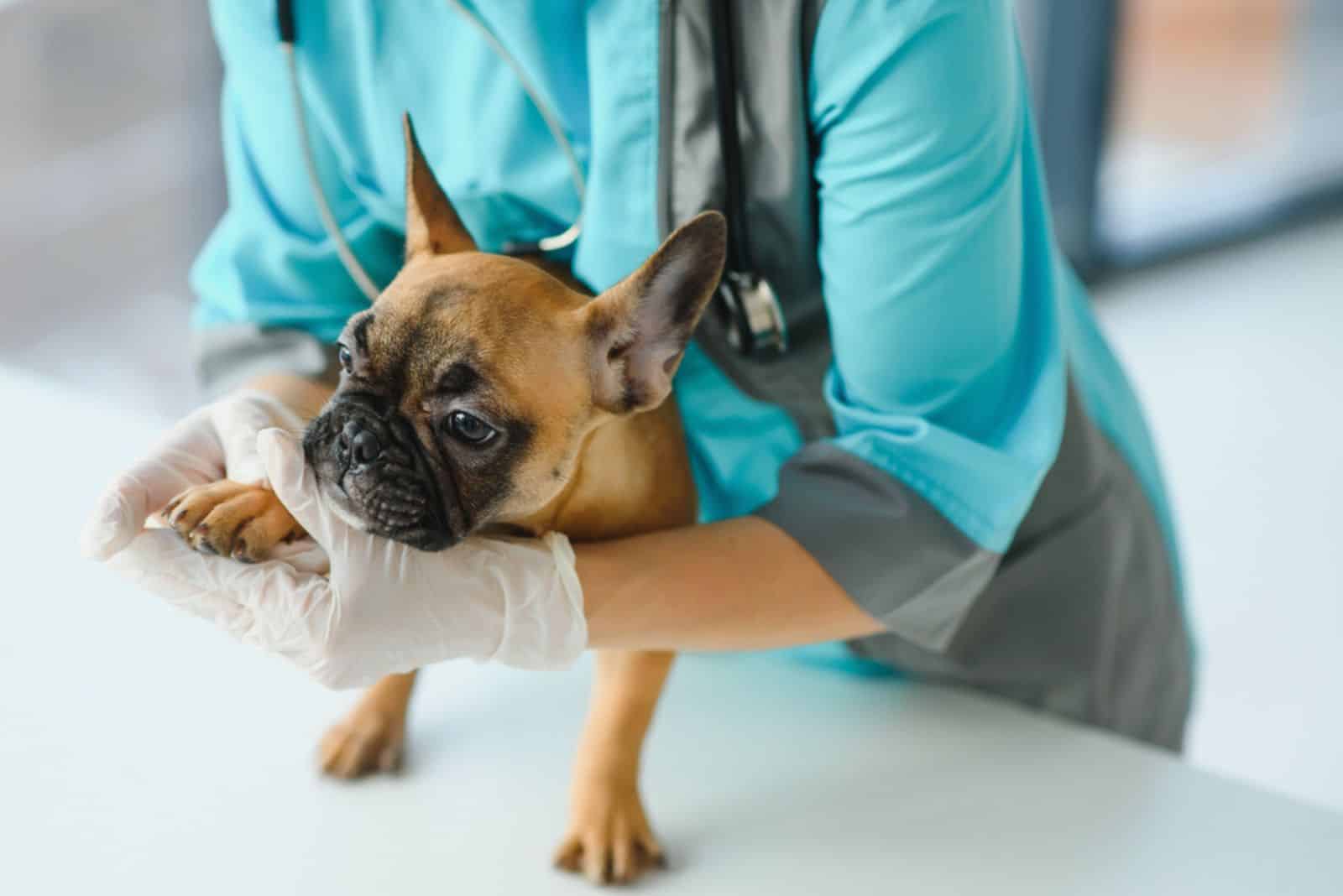
A red bum on a dog’s paw can mean pretty much anything, from bug bites to skin irritations, warts, and even skin cancers. It may be something harmless, but it can also be a sign of severe skin diseases.
Dogs of all ages can get these red bumps, and they’re not something that should be ignored.
Probably the most common red bump is an interdigital cyst, followed by abscesses, and skin conditions caused by mites, like demodicosis. Bug bites aren’t that rare.
But, unfortunately, canine cancer strikes quite often. The risk of your dog getting ill with cancer is pretty high.
If you stay tuned, we’ll discuss each common cause behind red bumps in detail.
Are There Other Symptoms Besides The Red Bumps?
Sometimes, besides the red bumps on a dog’s paw, swelling, fever, and your dog avoiding stepping on the affected paw are considered symptoms.
In most cases, these red paws are harmless, but problems occur if, for example, a constant fever accompanies your dog. Anti-inflammatory medications won’t help here. Your vet will need to find the cause behind these symptoms. Is it something severe? How severe is it?
The moment you sense a rotten smell coming from your dog’s paw, you should rush it to the vet. It’s a clear sign of an infection gone wrong.
Simply put, symptoms can be anything. As long as your dog pays attention to the bump, it’s a symptom.
Here’s What That Red Bump Can Mean!

That red bump isn’t just a red bump. I wouldn’t leave things as they are and not get that bump checked. Dogs aren’t like humans, and that’s definitely not a mosquito bite. There is an underlying cause behind the red bump and you must know what it is.
Usually, there are eight most common reasons why red bumps on a dog’s paw appear, and we’re about to go through them all.
Foreign Body
The most harmless reason behind a red bump on a dog’s paw is having a foreign body stuck there. This usually happens for dogs that are active and spend lots of time outside. A twig or a thorn may get stuck in your dog’s paw.
It’s not unusual for dogs to get things stuck in their paws, but it is unusual if you notice the affected area turning red. Redness is a sign of infection, and it definitely means your dog is in pain. These infections are normally followed by pus oozing from the red bump and high body temperature.
Your dog will need to have the foreign object removed and take a round of antibiotics.
A piece of advice for all dog owners who have experienced this or don’t want to risk it because they have an active dog is to buy doggy shoes or socks. They will protect your buddy from getting cut or having a piece of rock, twig, grass awn, thorn, or anything else stuck in their adorable paws.
Interdigital Cysts
Just like the name says, interdigital cysts are the cysts that appear between the dog’s fingers. You can find them under the names ‘pododermatitis’, or ‘interdigital furunculosis’, too. It’s quite unpleasant to have a foreign body stuck there, isn’t it?
Well, interdigital cysts are even more painful than a thorn or an abscess. These are red bumps filled with blood and puss, and they affect your dog’s ability to walk properly. Dogs limp and show pain and discomfort when using the affected paw.
These cysts are a result of hair follicles getting clogged or infected. Dogs like Mastiffs, Great Danes, Shar Peis, and Bulldogs are more prone to interdigital cysts than others because the webbing between their toes is covered in thin, sensitive skin and a short coat.
I suggest you have these cysts checked as soon as you notice them.
Sometimes, the cysts will bother your dog, and even cause other issues on the paws like the separation of the nail from the quick.
Bug Bites
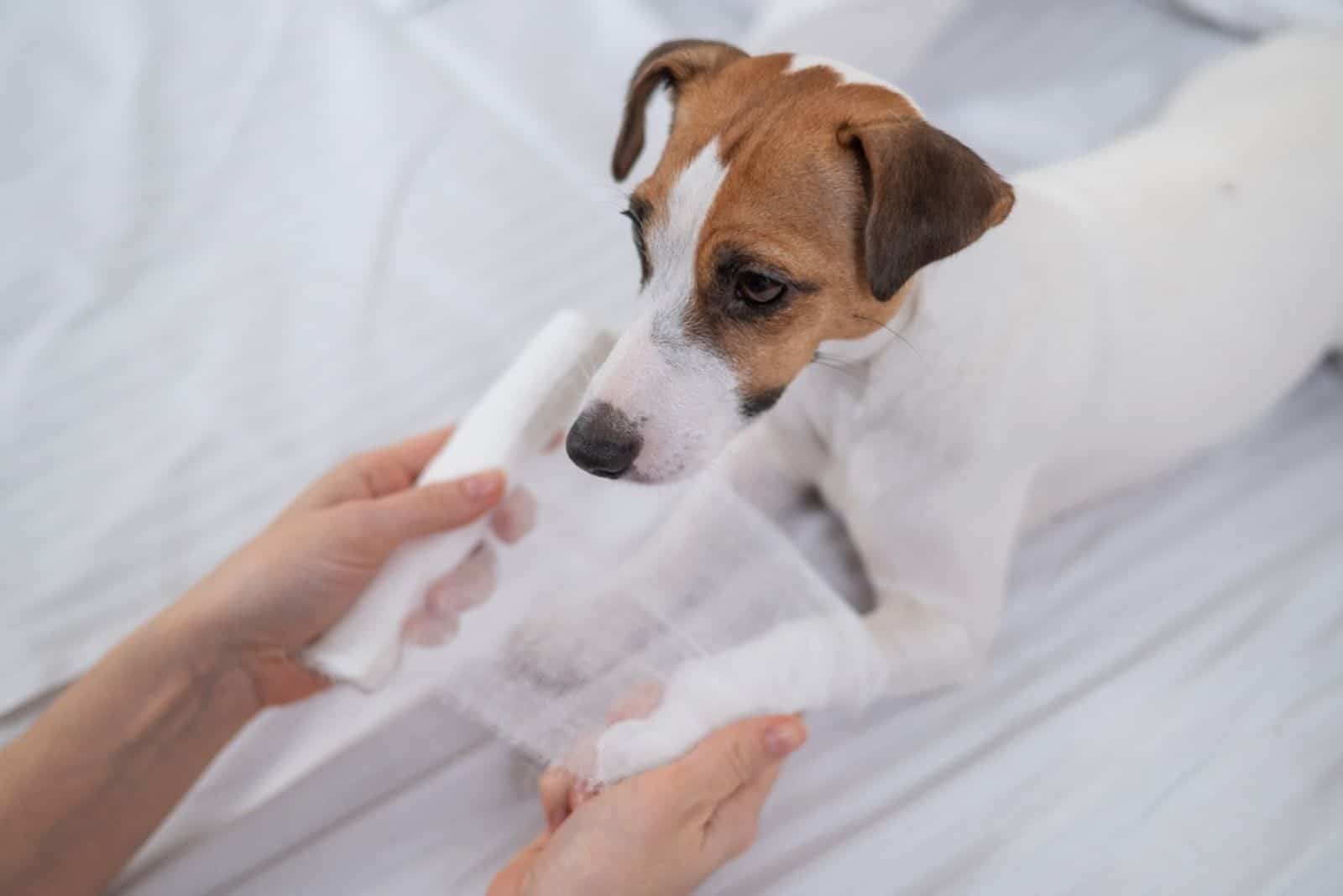
Bug bites are quite common, but we don’t get the chance to see them as often as with people. I mean, when was the last time you saw a mosquito bite a dog or any other bug, for that matter.
But, they can still bite your dog. The bite might not look the same as with humans, but it will be there.
Since the dog’s skin on its paws is super sensitive and thin, bugs will bite your dog there. It’s easier for them instead of going through layers of coat to reach the skin.
Another popular bite is a bee’s bite. It’s not uncommon for a dog to step on a bee and get stung. If you notice any swelling, you should have that red bump on the dog’s paw checked before it turns into a severe infection.
Fatty Tumors
Fatty tumors (or lipomas) can occur anywhere on a dog’s body, but they’re especially prone to appearing between a dog’s toes. They’re not malignant – just a benign growth that could bother your dog.
Lipomas can grow and become quite large. They will affect your dog’s ability to walk, so they should be removed in such cases. If the lipoma is a smaller one, then removal might not be needed.
Dogs prone to obesity, as well as senior dogs, are more likely to get lipomas.
A poor diet has a lot to do with the formation of fatty tumors. Processed human foods are to blame for lipomas. As a pet owner, you must avoid such food, and give your dog age-appropriate kibble.
If you own a Golden Retriever or a Labrador, you should pay attention to any change on your dog’s paws as these dog breeds seem to get more lipomas than others.
Warts
Believe it or not, dogs can get warts, too. They’re not a pleasant sight, but which red bump on a dog’s paw is?
Warts are a result of viruses that spread from dog to dog. It’s not possible for pups to catch it from their owner. Your dog could easily pick it up in a park or in a daycare from another dog. There’s no way to know.
Warts are normally the same color as the dog’s skin. You will easily spot their cauliflower-shaped head. The good news is that they don’t hurt. In most cases, warts aren’t even dangerous.
However, they can be annoying and bother your dog, especially if there are too many of them in one place. If you notice lots of warts on your dog’s paw, isolate the dog so it doesn’t spread to your other pups, and take it to the vet.
Warts usually go by on their own, but you can definitely speed up the process.
Sebaceous Cysts
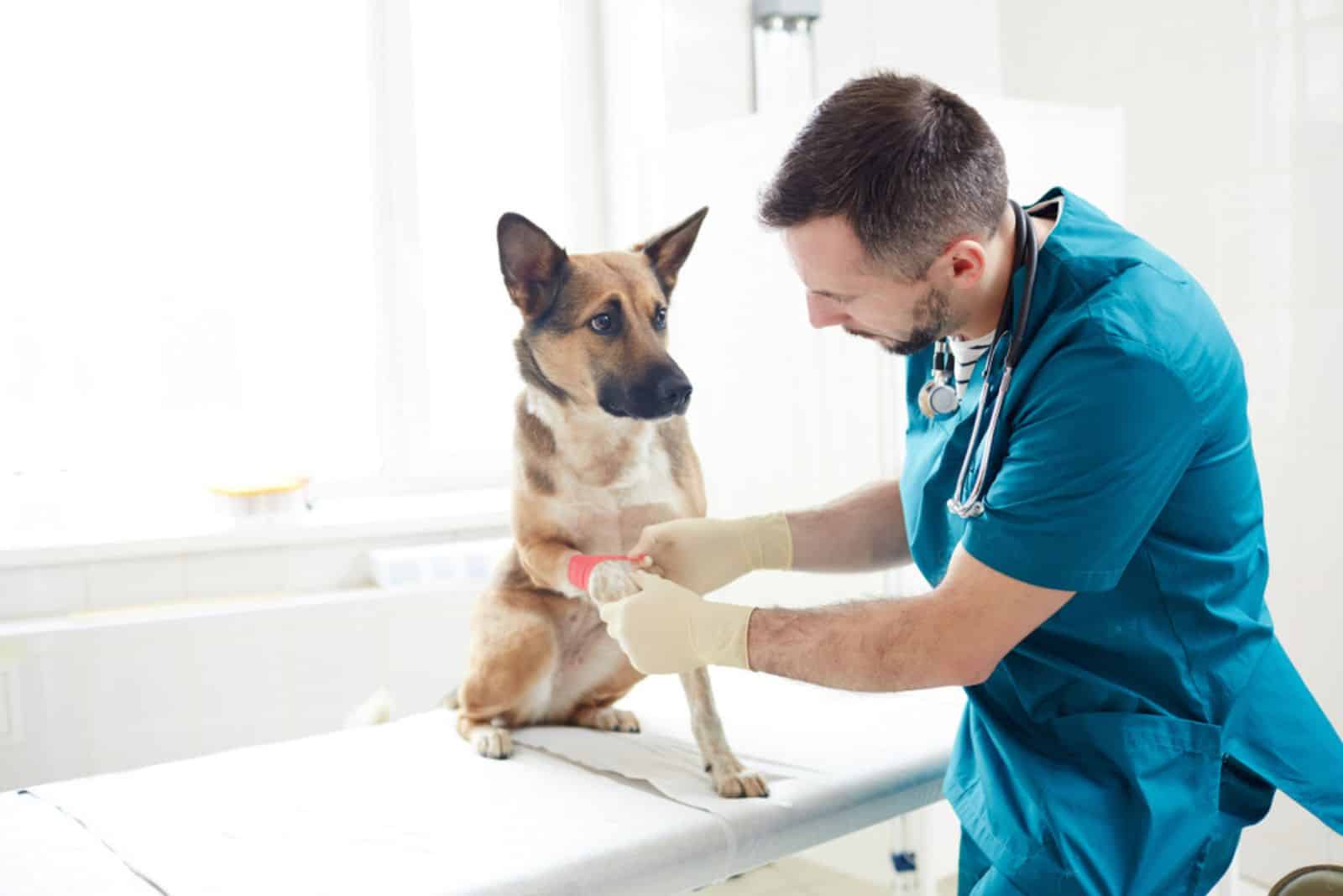
Sebaceous cysts sound like something really scary, but I promise you, it’s not. These are actually dog pimples!
A sebaceous cyst happens when a blocked follicle fills up with sebum. Sebum is a product of sebaceous glands. These glands produce too much sebum if the dog has poor nutrition, but it can also be a genetic issue.
An inflamed sebaceous cyst looks exactly like a red bump on a dog’s paw. It’s round and red on the outside, but it’s filled with white puss inside.
Your vet will be able to determine if it is really a sebaceous cyst with a biopsy. It can be drained and treated with a round of antibiotics, but these cysts usually disappear on their own.
To prevent these cysts, you should stick to your dog’s bathing schedule and use only shampoos appropriate for the dog’s sensitive skin.
Abscess
So, that’s why your dog’s feet are smelling like fritos! Ugh… that rotten smell is absolutely disgusting.
Abscesses are quite common, and they occur if something gets stuck in a dog’s paw. It’s a much more severe condition than getting something stuck like a thorn. Abscesses are usually big, painful, and could cause fever.
This requires immediate veterinary care. If the abscess bursts, it can cause quite a mess. Your DVM (Doctor of Veterinary Medicine) should drain the abscess, flush it, and put a dressing on the wound to keep it clean. Antibiotics are in order after the procedure.
Skin Cancer
The red nodules that might appear on your dog’s hind or front paws can actually be a sign of skin cancer.
I don’t want to scare you, so I’ll jump right in and tell you that it’s not something fatal if it’s discovered in time.
Canine skin tumors are usually caused by sun exposure. Melanomas of the skin usually strike light-colored dogs or those that spend way too much time in direct sunlight, especially when the UV index is too high.
But, you can’t put sunscreen on your dog all the time. What you should do is keep a short-coated, light-colored dog away from the sun when it’s too hot. It’s so easy for them to develop a skin condition.
Melanomas aren’t the only type of cancer that are related to red bumps. Mast cell tumors or MCTs are also quite common and happen for no known reason. Some breeds like Boxers or Pugs are more prone to them, and we all know that Pugs usually suffer from many skin problems.
Lastly, what scares me the most as a dog owner is SCC, otherwise known as the Squamous Cell Carcinoma.
This condition is pretty invasive, and thus, severe. SCC develops in primary cells of the skin and the mucous membranes. Usually, when a dog has less pigment in one area, or has no hair there, SCC tends to show up with those nasty red bumps.
SCC isn’t something that should be ignored or treated at home. It’s simply not possible. So, the moment you suspect SCC signs on your dog’s body, you should inform your vet.
How Do You Treat A Red Bump On Dog Paw?
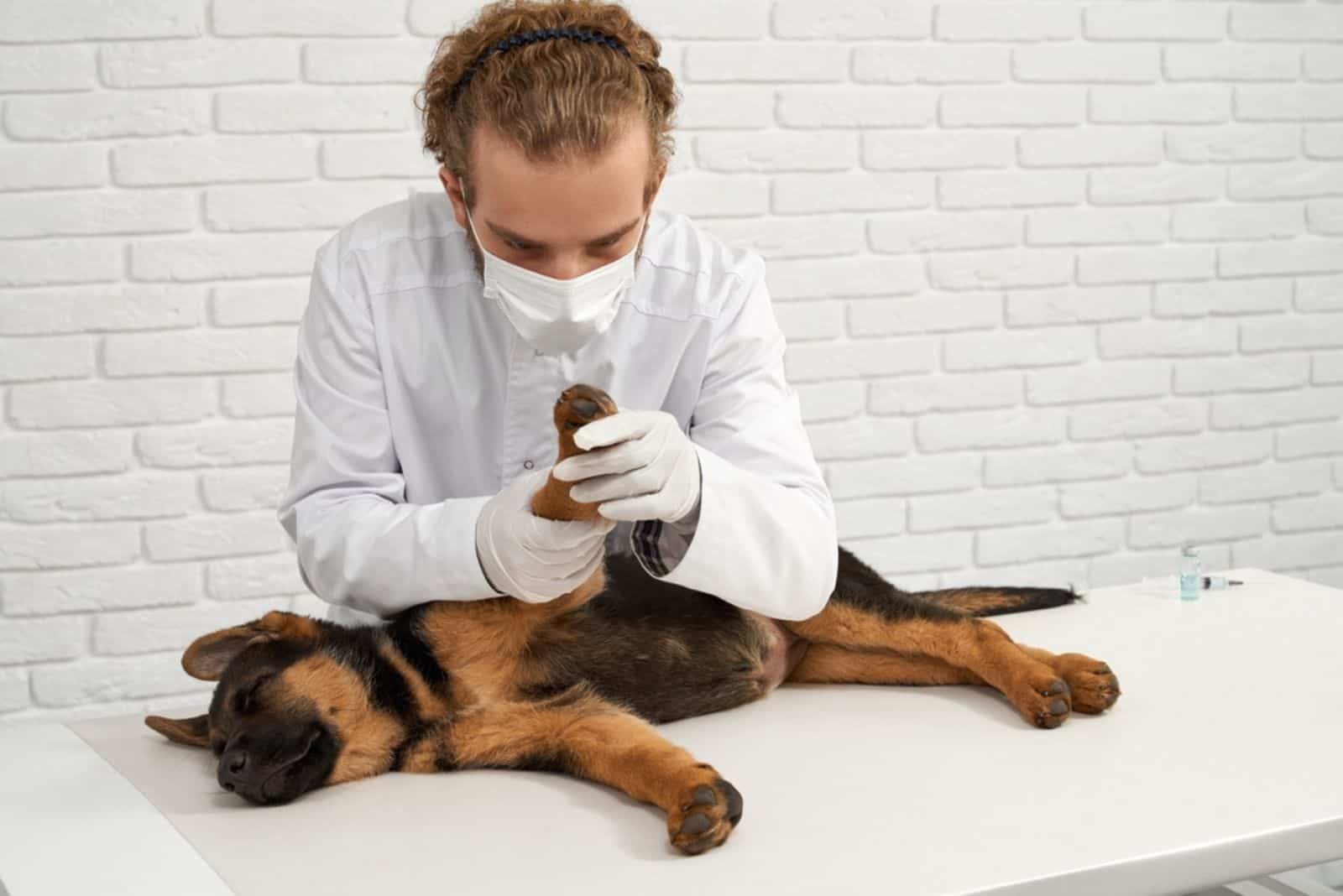
There is not a general treatment for that red bump on a dog’s paw simply because they’re not caused by the same conditions.
Usually, your vet will examine the bump, and maybe even perform a biopsy. If it’s something harmless, your dog’s red bump will be put under topical treatment, cleaned and dressed, and antibiotics will be prescribed.
Sometimes, the bump will disappear on its own.
Sometimes, it won’t.
If I were in your place, I wouldn’t let it go unnoticed. I would have that bump checked. It can be nothing, but it can also be a sign of severe skin conditions or cancer.
Let your chosen doctor of veterinary medicine treat the bump so both you and your dog can sleep soundly.
Histiocytoma As The Most Common Red Bump On A Dog’s Paw
Now that you know what the most common red bumps found on a dog’s paws are, we can discuss probably the most common one of them, histiocytomas.
I know this sounds pretty complicated, and it does look scary, but there’s nothing that should freak you out. You should be able to identify a histiocytoma by yourself, but if you’re not capable, your vet will quickly examine your dog and tell you the diagnosis.
So, what are histiocytomas besides those awkward red bumps?
Histiocytomas are actually benign growths. They’re harmless little bumps of smooth skin, raised, and sometimes ulcerated. The good news is that they don’t seem to bother your dog. They’re not itchy or painful. But, they can get in the way, especially if you have an active canine.
Normally, histiocytomas don’t need to be operated. Still, if you notice them growing, you should put your dog through the surgical process of removal because they can get pretty unpleasant.
Histiocytomas are, luckily, non-cancerous, and they can’t turn into malignant tumors over time. Good to know! You don’t want to raise panic over nothing.
These small red bumps usually appear with younger dogs. Typically, dogs around three years of age experience them, but they won’t give you a sign they’re there. In most cases, owners spot them on their own because dogs don’t acknowledge them by licking at all.
Histiocytomas shouldn’t grow past 1.5 inches in diameter. They’re usually smaller, and shaped like buttons. It’s not known why they appear on a dog’s body, but it seems like some breeds such as Bulldogs and Labrador Retrievers are more prone to getting them.
Diagnosis
As I mentioned earlier, you can detect histiocytomas by yourself, but in case you’re not sure, better consult with your vet. The vet will go through your dog’s history and examine him to be sure it’s benign growth and not cancer.
But, what’s interesting is that even the vet can’t be sure if it’s 100% benign unless he observes it under a microscope. Don’t expect to see your dog’s whole paw under the microscope. That won’t happen.
What your vet will do is either take a small sample of the growth (known as a biopsy) or perform FNA (Fine Needle Aspiration). FNA is far less invasive, and it’s a quick procedure so you’ll find out what the problem is in no time.
Some rare cases; for example, if the growth is not easy to approach for biopsy or FNA, will require you to wait and monitor the growth for any changes in size or discoloration.
Treatment
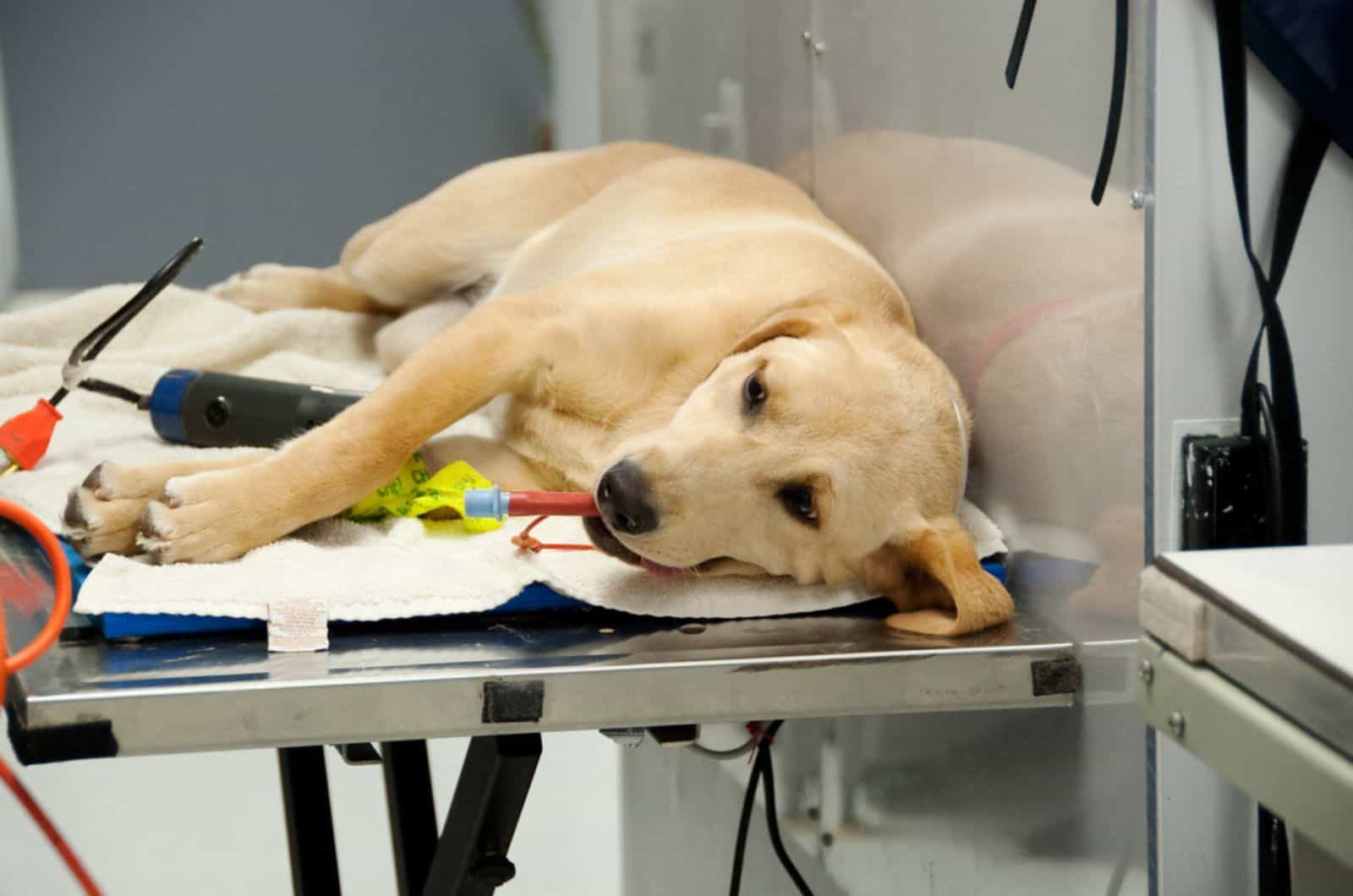
As far as the treatment is concerned, once your dog gets diagnosed with histiocytomas, your vet will have three options for you. You’ll either wait for a few months to see if it bothers your dog. Or, you’ll have to solve it with surgery.
A lot of vets recommend cryosurgery, and I couldn’t agree more with them. It’s non-invasive, fast, and pretty efficient. The process consists of administering the anesthetic into the affected area and freezing the growth. But, this only works for small histiocytomas.
Large histiocytomas will need to be removed via a real surgical process.
It’s pretty rare for histiocytomas to disappear on their own. If your dog has it, I recommend you get rid of it as soon as you can. Even though histiocytomas aren’t painful, your dog might still nibble on them for fun, and thus, cause infections and even more problems.
Histiocytomas aren’t cancerous, but they can show up as a sign that malignant tumors have affected other areas of your dog’s body, i.e., the bone underneath the histiocytoma.
Unfortunately, since we don’t know exactly what causes benign histiocytomas, it’s not possible to prevent them.
Final Words
Not every red bump on dog paw means cancer. Some are actually harmless. Before you freak out and rush your dog to the vet, look out for other symptoms. Is your dog licking and chewing the bump? Does he have a fever? Is the paw smelling like rotten meat?
These are only a few symptoms. Usually, when dogs pay attention to the bump, it means it’s bothering them. That’s your sign to call in for a checkup.
I would recommend you never ignore any change on your dog’s body. Any lesions, bumps, or nodules can be a sign of conditions that could affect your pet’s health significantly.
Better be safe than sorry! Have that red bump on dog paw checked before it’s too late.













